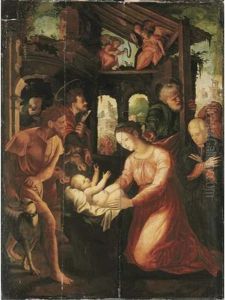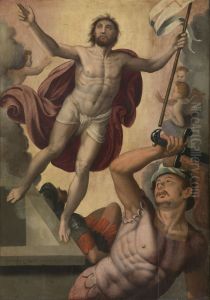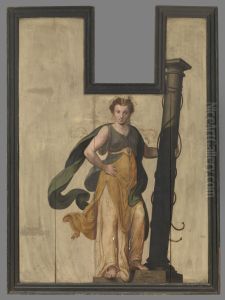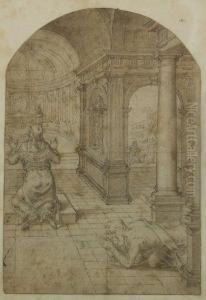Lambert van Noort Paintings
Lambert van Noort was a notable figure in the Northern Renaissance, born in 1520 in Amersfoort, Netherlands. His contributions to art history, though perhaps not as widely recognized as some of his contemporaries, played a significant role in the development of Dutch and Flemish Renaissance painting. Van Noort's early life is somewhat obscure, but it is known that he traveled extensively in his youth, which greatly influenced his artistic development.
He is believed to have spent time in Italy, where he was exposed to the works of the Italian masters, and this experience is evident in the Italianate influences in his work. Despite this, van Noort's style remained deeply rooted in the Northern European artistic tradition, characterized by a meticulous attention to detail and a keen interest in depicting domestic and religious themes with a heightened sense of realism.
Upon returning to the Low Countries, van Noort settled in Antwerp, which was then one of the leading centers of art and culture in Europe. It was here that he established himself as a master painter and also engaged in teaching, most notably mentoring the young Adam van Noort, who would go on to become a prominent painter in his own right and the master of Peter Paul Rubens. Lambert van Noort's influence, therefore, extended far beyond his own works, through his significant contributions to the training of the next generation of artists.
Van Noort's oeuvre includes religious compositions, portraits, and intricate tapestry designs. His works are characterized by their vivid detail and the use of light, showcasing his skill in creating depth and texture. While only a limited number of his paintings have survived, those that do demonstrate his ability to combine the narrative depth and emotional intensity of the Italian Renaissance with the precise detail and realism of the Northern Renaissance.
Lambert van Noort died in 1571 in Antwerp. His legacy is preserved through his surviving works and the impact he had on his students. Despite not achieving the same level of fame as some of his contemporaries, his contributions to the Renaissance art movement continue to be appreciated by art historians and enthusiasts alike.































